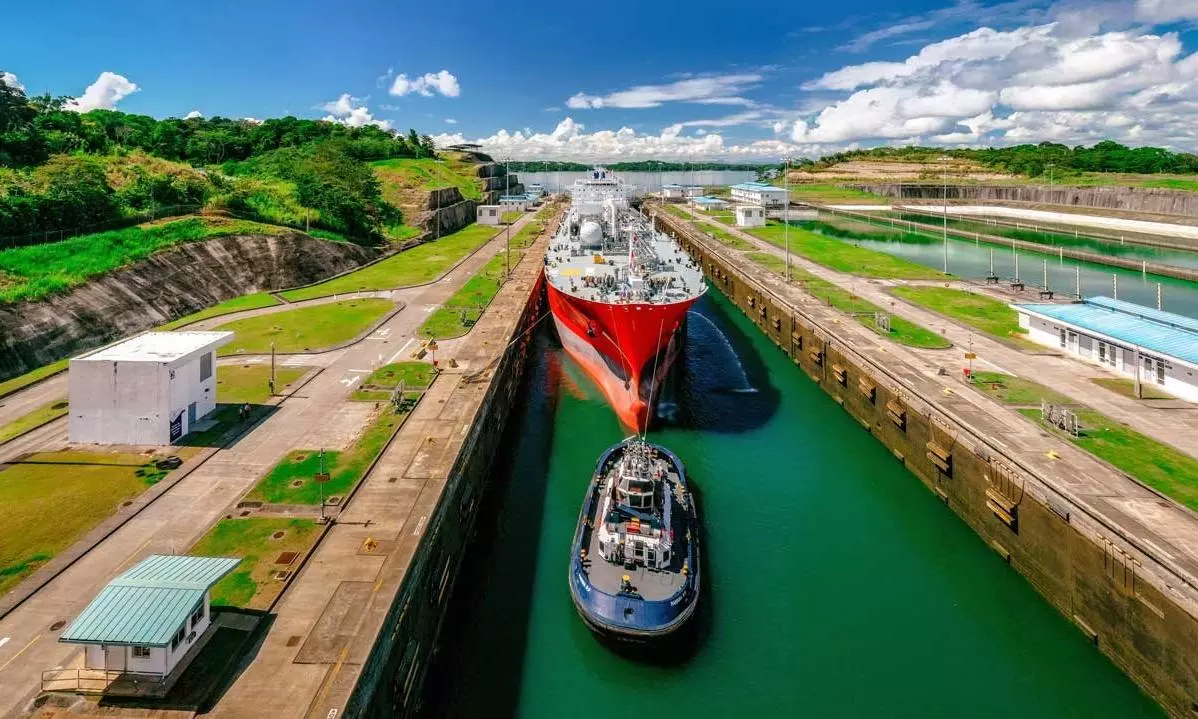Panama Canal restrictions draw mixed reactions
While restrictions could impact Christmas stocks, shippers diverting containers via Suez have been minimal

As wholesale inventories dwindle in the U.S., the ongoing restrictions at the Panama Canal could have implications for Christmas stocks and supply chains, according to the latest update from Container xChange.
"With the imminent Christmas shopping season, the delay in inventory restocking due to shipping disruptions and congestion at the Panama Canal could result in missed sales opportunities for businesses."
There are as many as 120 ships waiting for transit through the Panama Canal as of August 24, according to data from the Panama Canal Authority. "For this month, the average waiting time for unbooked transits is between nine and 11 days. We are continuously monitoring these figures and implementing measures to improve the flow. "
Christian Roeloffs, Co-Founder and CEO, Container xChange says: “Ongoing challenges at the Panama Canal are making existing worries for industries even worse. New industry information shows that the U.S. economy’s consumer spending has seen an uptick, which is good. With inventories falling and demand expected to rebound, the Panama Canal, which carries 40 percent of container traffic from Asia to Europe, is likely to experience increased pressure.”
With the Panama Canal Authority implementing water conservation measures in response to a drought, vessels are experiencing prolonged wait times and capacity limitations, resulting in a ripple effect across the shipping sector, the update added.
The area around the canal is experiencing one of the two driest years in the country's 143 years of keeping records, Reuters reported.
More than 14,000 ships crossed the canal in 2022, generating revenue of over $3 billion, and container ships are among the most common users of the Panama Canal.
"The knock-on effects are also anticipated to affect costs. The need for alternative routes and the resulting longer lead times due to the ongoing congestion have the potential to increase operational expenses for carriers. These cost increases may eventually be passed down to businesses and consumers alike. While optimism surrounds the prospect of improvements as the rainy season approaches, historical data indicates that even after the removal of draft restrictions, the process of clearing the accumulated backlog may still be a time-consuming endeavour."
Roeloffs adds: “These supply chain disruptions are expected to reverberate throughout the industry with potential consequences for container prices. The ongoing congestion and reduced capacity have led to heightened competition for available slots, driving up spot freight rates. The scarcity of available vessel capacity has prompted carriers to reevaluate pricing strategies to offset increased costs and uncertainties. Consequently, the traditional equilibrium of container prices may experience adjustments to accommodate the challenges of the Panama Canal congestion.”
Not many diversions: Freightos
Reports of shippers diverting containers to the West Coast or via the Suez have been minimal though ships unable to book ahead must bid for available slots and can pay as much as $1 million for a slot, adding extra costs and some time waiting, according to the latest update from Freightos.
"Spot rates have increased about $600/FEU to both coasts since mid-July with West Coast rates currently at $1,936/FEU and East Coast prices at $2,991/FEU. This climb represents a 47 percent increase for West Coast rates and only a 26 percent increase for East Coast prices. Likewise, East Coast rates are only 12 percent higher than August 2019 levels while West Coast prices are 46 percent higher than pre-pandemic levels," says Judah Levine, Head of Research, Freightos in the update.
Some congestion caused by canal restrictions is an additional factor reducing capacity somewhat and helping carriers push rates up "but barring additional significant canal restrictions, the worst of the impact could likely occur in the near-term and ease as demand subsides."



